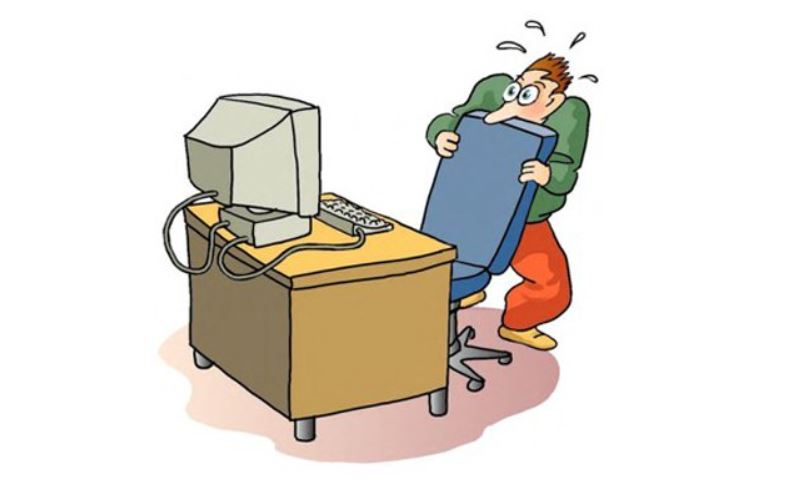In today’s digital age, technology has become an integral part of our daily lives. From smartphones and laptops to smart home devices and self-driving cars, technology surrounds us in nearly every aspect of life. While many people embrace these technological advancements with enthusiasm and curiosity, others experience a deep-seated fear and anxiety known as technophobia. This article explores the concept of technophobia, its causes, symptoms, and offers strategies to deal with it effectively.
Understanding Technophobia
Technophobia, derived from the Greek words “techne” meaning skill or craft and “phobos” meaning fear, is the irrational and persistent fear or aversion to technology. It encompasses a wide range of fears related to technology (fear of technology), from a general unease around gadgets to specific anxieties like fear of computers, smartphones, or the internet.
Technophobia can manifest in various ways and intensities, depending on the individual. Some people may experience mild discomfort when using technology, while others may avoid it altogether, feeling overwhelmed by the rapid pace of technological change. This fear can be directed at specific technologies, such as computers or robots, or it can be a more general apprehension about technology as a whole.

The Causes
Technophobia can have various underlying causes, and it often results from a combination of factors:
-
Fear of the Unknown
One of the primary causes of technophobia is the fear of the unknown. When individuals encounter technology they are not familiar with, they may feel overwhelmed and anxious. This fear is often rooted in a lack of understanding and experience.
-
Negative Experiences
Negative experiences with technology can contribute to technophobia. For example, someone who has lost important data due to a computer malfunction may develop a deep-seated fear of using computers in the future.
-
Fear of Change
Technophobia can also stem from a fear of change. As technology rapidly evolves, some individuals may feel uncomfortable with the constant need to adapt and learn new skills. They may perceive technological advancements as a threat to their established routines and comfort zones.
-
Information Overload
The constant barrage of information and stimuli in the digital age can lead to information overload. People overwhelmed by the sheer volume of information and the pace of technological change may develop technophobia as a coping mechanism.
-
Cultural Factors
Cultural factors can also play a role in technophobia. In some societies, there may be a prevailing mistrust of technology, leading individuals to adopt negative attitudes and fears toward it.
-
Psychological Factors
Individual psychological factors, such as anxiety disorders or a general predisposition to fear, can contribute to technophobia. These underlying psychological issues may amplify the fear of technology.
Recognizing the Symptoms of Technophobia
Technophobia can manifest in various symptoms, both physical and psychological. Recognizing these symptoms is the first step in addressing and managing technophobia:
-
Avoidance Behavior
Individuals with technophobia may actively avoid using technology, even when it is necessary for work, communication, or daily life. They may choose analog methods over digital ones to circumvent their fear.
-
Anxiety and Panic Attacks
Using technology or even thinking about it can trigger anxiety and panic attacks in individuals with technophobia. Symptoms may include rapid heartbeat, sweating, trembling, and a sense of impending doom.
-
Negative Emotions
Technophobia can lead to a range of negative emotions, including frustration, anger, and sadness. These emotions may be directed at the technology itself or at the person’s perceived inability to use it.
-
Physical Symptoms
Physical symptoms such as headaches, stomachaches, and muscle tension can accompany technophobia, especially during or after technology use.
-
Procrastination
People with technophobia may procrastinate when faced with tasks that involve technology, leading to missed opportunities and increased stress.
-
Social Isolation
Technophobia can contribute to social isolation, as individuals may avoid social activities that require the use of technology or online communication.
Strategies to Deal With Technophobia
While technophobia can be challenging to overcome, it is not insurmountable. With patience, understanding, and the right strategies, individuals can learn to manage and reduce their fear of technology. Here are some effective ways to deal with technophobia:
-
Education and Familiarity
Knowledge is power. One of the most effective ways to combat technophobia is through education and familiarity with technology. Taking courses, attending workshops, or simply exploring technology in a controlled and supportive environment can demystify it and build confidence.
-
Gradual Exposure
Start small and build confidence. Gradual exposure to technology can help individuals become more comfortable with it. Begin with simple tasks and gradually increase the complexity as confidence grows.
-
Seek Support
Don’t go it alone. Seek support from friends, family members, or support groups for individuals with technophobia. Sharing your fears and experiences with others who understand can provide emotional support and practical advice.
-
Mindfulness and Relaxation Techniques
Manage anxiety. Practicing mindfulness and relaxation techniques, such as deep breathing or meditation, can help individuals manage anxiety and reduce panic attacks associated with technophobia.
-
Positive Self-Talk
Challenge negative thoughts. Pay attention to the self-talk that accompanies your fear of technology. Challenge negative beliefs and replace them with positive affirmations. Remind yourself that you can learn and adapt.
-
Professional Help
Consider therapy. For severe cases of technophobia that significantly impact daily life, it may be helpful to seek the assistance of a therapist or counselor. Cognitive-behavioral therapy (CBT) can be particularly effective in addressing phobias.
-
Take Breaks
Don’t push yourself too hard. It’s essential to recognize your limits and take breaks when necessary. Pushing through intense anxiety may exacerbate the fear.
-
Stay Informed
Keep up with technology. Stay informed about technological advancements and changes. Knowledge about the benefits and risks of technology can help demystify it and reduce fear.
-
Use Technology Positively
Focus on the benefits. Embrace technology for its positive aspects. Use it for activities that bring joy, such as connecting with loved ones, pursuing hobbies, or learning new skills.
-
Set Realistic Goals
Set achievable goals. When learning to use technology, set realistic and achievable goals. Celebrate small victories along the way to boost your confidence.
-
Embrace a Growth Mindset
Believe in your ability to learn. Adopt a growth mindset, understanding that your abilities can improve with effort and practice. This perspective can be empowering and motivating.
-
Exposure Therapy
Gradual exposure therapy involves systematically exposing oneself to feared technologies in a controlled and supportive environment. For example, someone with a fear of computers might start by simply turning on a computer and gradually progress to performing basic tasks.
-
Assistive Technologies
Assistive technologies can be invaluable for individuals with technophobia. Screen readers, voice-activated assistants, and other accessibility tools can make technology more approachable and less intimidating.
-
Supportive Communities
Online and offline support communities can provide a sense of belonging and understanding for individuals with technophobia. Joining forums or groups where people share their experiences and strategies can be incredibly helpful.
-
Family and Peer Support
Family and friends can play a crucial role in helping individuals overcome technophobia. Encouragement, patience, and assistance from loved ones can provide emotional support during the learning process.
-
Professional Training
Enrolling in professional training programs or courses related to technology can boost confidence and competence. Many community colleges and online platforms offer technology classes suitable for beginners.
-
Exposure Through Gamification
Gamification is a method that uses game-like elements to engage users and encourage them to interact with technology in a fun and non-threatening way. Educational games and apps can be particularly effective in reducing technophobia.
-
Self-Help Resources
Books, articles, and online resources are readily available to help individuals understand and overcome technophobia. These resources can provide valuable insights, tips, and guidance.
-
Cognitive-Behavioral Techniques
Cognitive-behavioral techniques, often employed by therapists, can help individuals challenge and reframe their negative thoughts and beliefs about technology. This form of therapy can be highly effective in reducing anxiety and fear.
-
Real-World Application
Encourage the practical application of technology in daily life. This might involve using a GPS for navigation, setting up online banking, or using video calls to connect with loved ones. Real-world applications reinforce learning and build confidence.
The Role of Technophobia in the Digital Age
It’s essential to recognize that technophobia is not just a personal struggle but a societal issue with broader implications. As technology continues to advance at an unprecedented pace, bridging the digital divide and helping individuals overcome their fear of technology becomes increasingly crucial. Here are some considerations regarding the role of technophobia in the digital age:
-
Digital Inclusion
Digital inclusion efforts aim to ensure that everyone, regardless of their level of comfort with technology, has access to and can benefit from digital resources and services. Bridging the digital divide requires addressing technophobia as a barrier to access.
-
Employment and Economic Impact
Technophobia can impact an individual’s ability to secure and maintain employment, particularly in jobs that require digital skills. This can have long-term economic consequences for affected individuals and communities.
-
Education
In education, technophobia can hinder students’ ability to engage with digital learning materials and platforms. Schools and educational institutions must provide support and resources to help students overcome technophobia.
-
Mental Health
The fear of technology can have significant mental health implications. The constant stress and anxiety associated with technophobia can lead to more severe mental health issues, including depression and social isolation.
The Complex Nature of Technophobia
Technophobia is a complex and multifaceted issue that can affect people of all ages, backgrounds, and levels of technological exposure. It is not limited to a single form of technology but can encompass a wide range of devices and systems. Here are some additional insights into the nature of technophobia:
-
Specific vs. General Technophobia
Technophobia can manifest in specific or general forms. Specific technophobia involves fear or discomfort with particular technologies or applications, such as social media, smartphones, or even self-checkout kiosks at stores. In contrast, general technophobia is a broader fear that encompasses various technologies and digital platforms.
-
Technostress
Technostress is a related concept that often coexists with technophobia. It refers to the stress and anxiety people experience when they feel overwhelmed by the constant influx of information and the demands of technology. Technostress can exacerbate technophobia and contribute to its persistence.
-
Age-Related Technophobia
Technophobia is more prevalent among older generations who did not grow up with digital technology as an integral part of their lives. These individuals may feel a sense of alienation and inadequacy when faced with the technology-driven world of today.
-
Technophobia in the Workplace
In the workplace, technophobia can hinder productivity and career advancement. Employees who fear technology may struggle to adapt to new tools and software, limiting their ability to excel in their roles.
Conclusion
Technophobia is a real and often debilitating fear of technology that affects individuals in various ways. It can be triggered by a fear of the unknown, negative experiences, resistance to change, information overload, cultural factors, and psychological predispositions. Recognizing the symptoms of technophobia is the first step in addressing it, and there are numerous strategies to help individuals manage and overcome their fear.
By educating themselves, seeking support, practicing mindfulness, and gradually exposing themselves to technology, individuals with technophobia can regain control over their lives and embrace the benefits of the digital age. It’s essential to remember that overcoming technophobia is a process that takes time and effort, but with persistence and the right support, it is entirely achievable.
In a world where technology is an integral part of daily life, empowering individuals to confront and conquer their fear of technology is a step toward digital inclusion, economic prosperity, and improved overall well-being. With patience, support, and a willingness to learn, individuals can navigate the digital age with confidence and embrace the benefits of technology while managing their fear.

Thanks a lot
Great Knowledge cover Keep Growing..